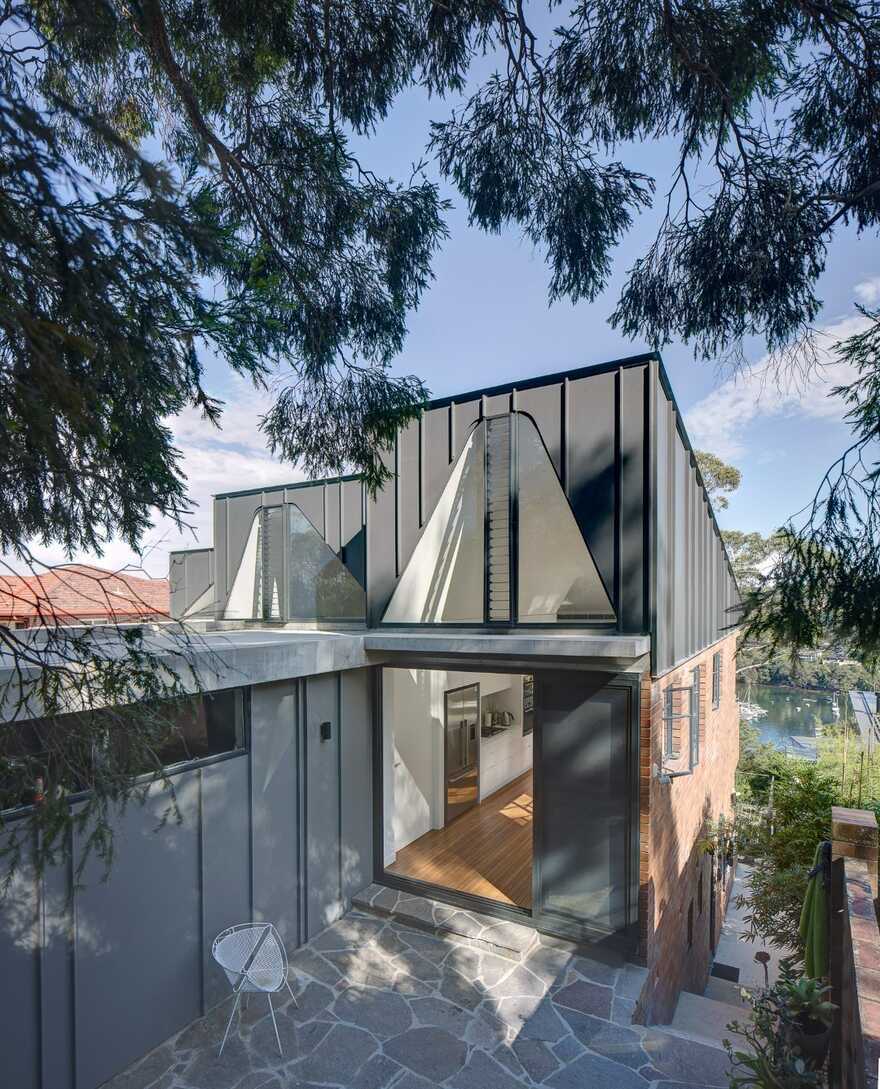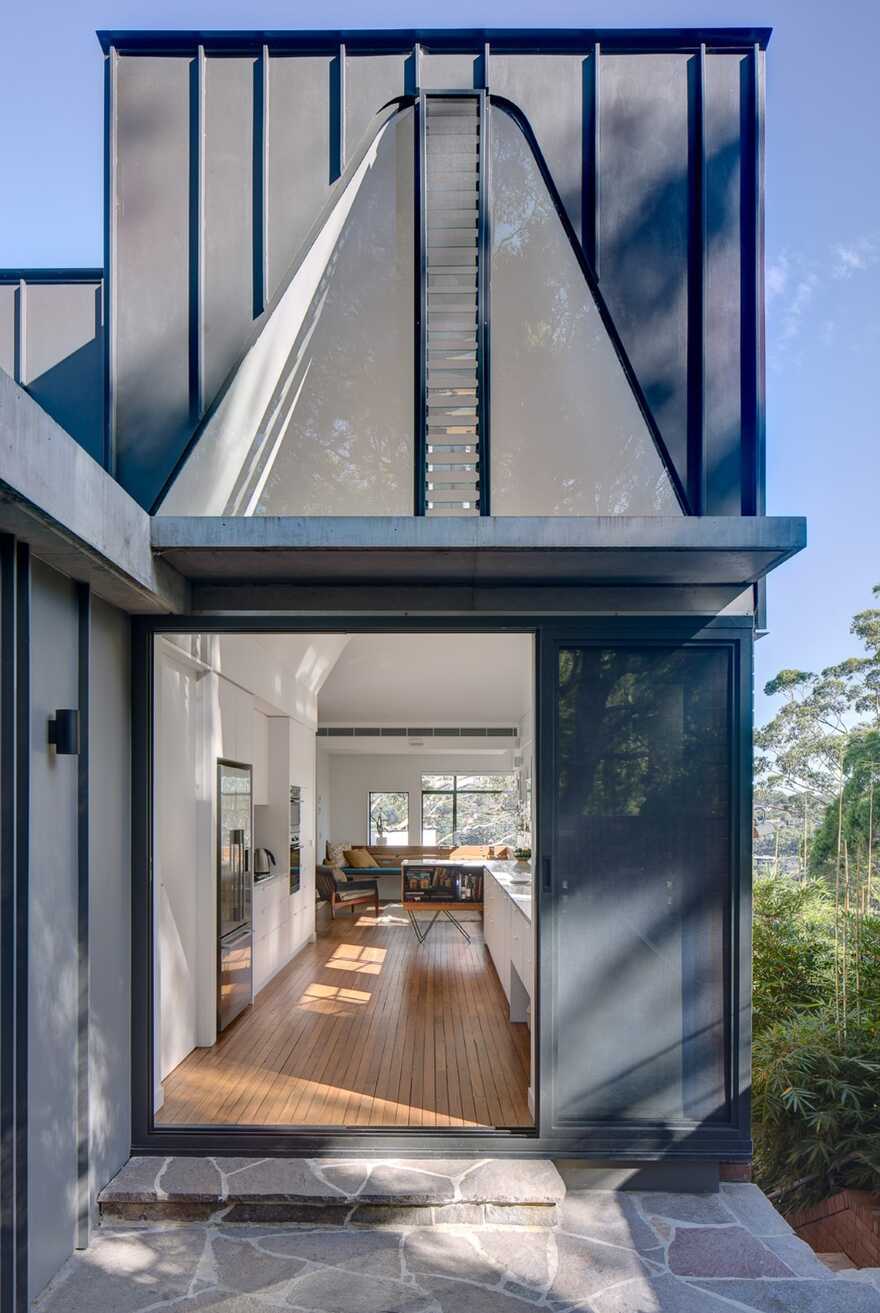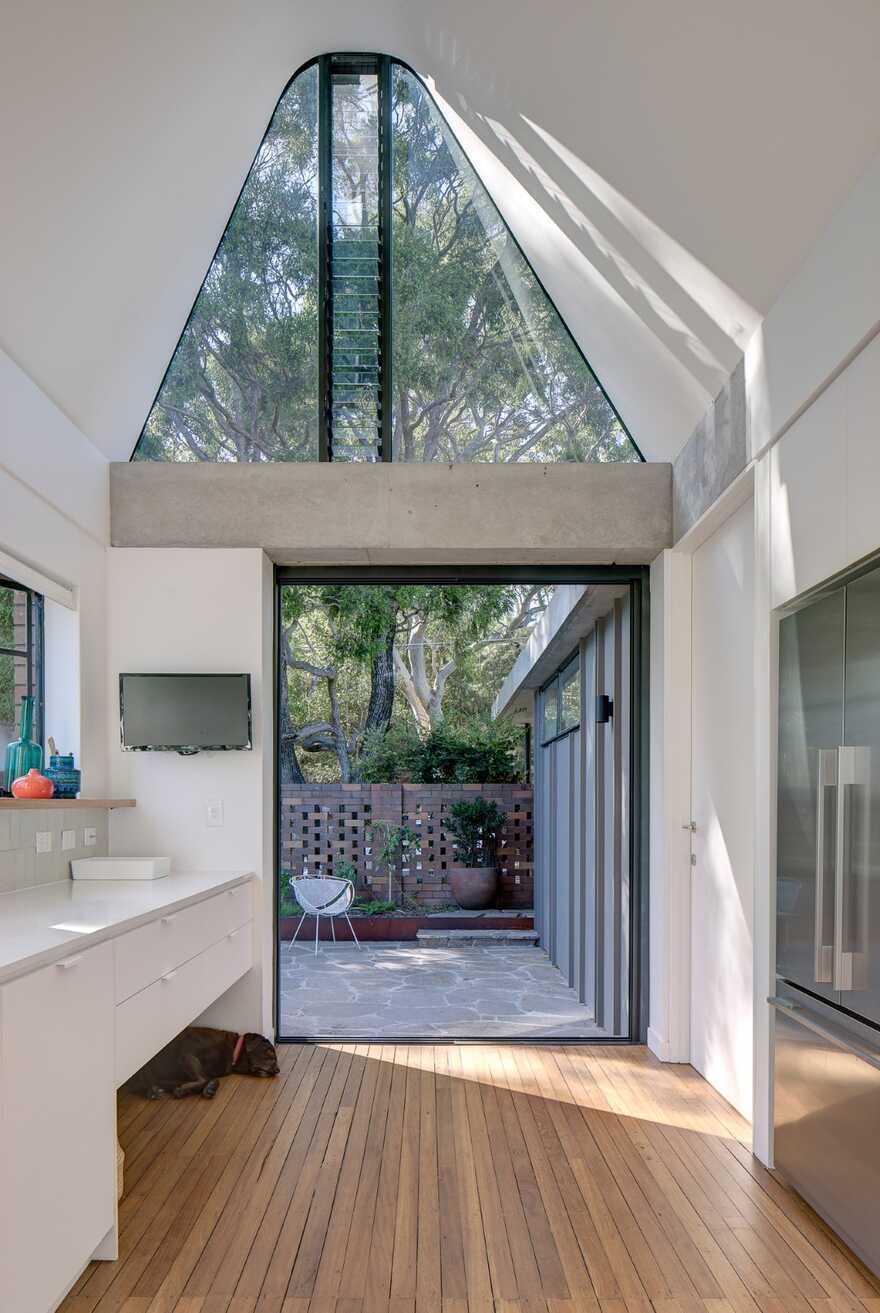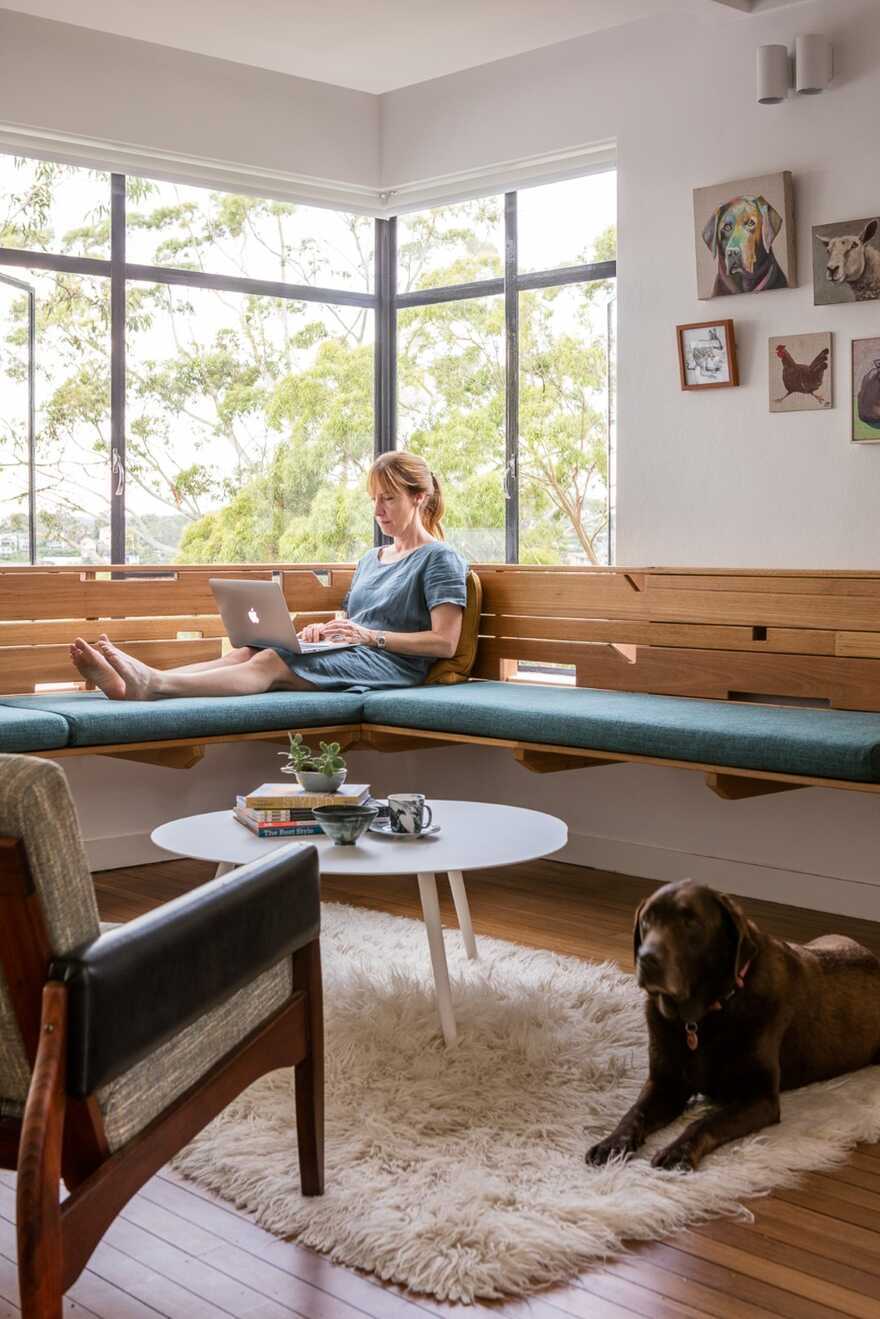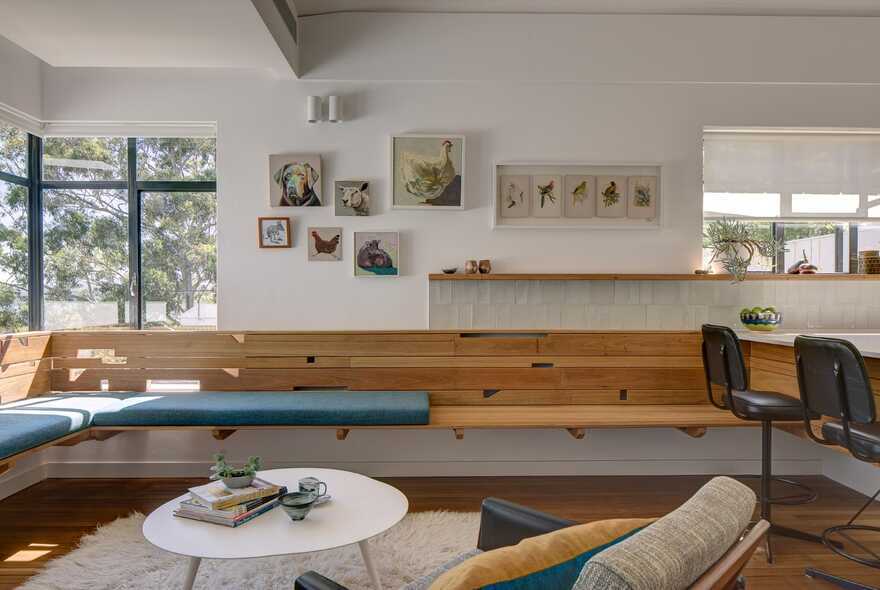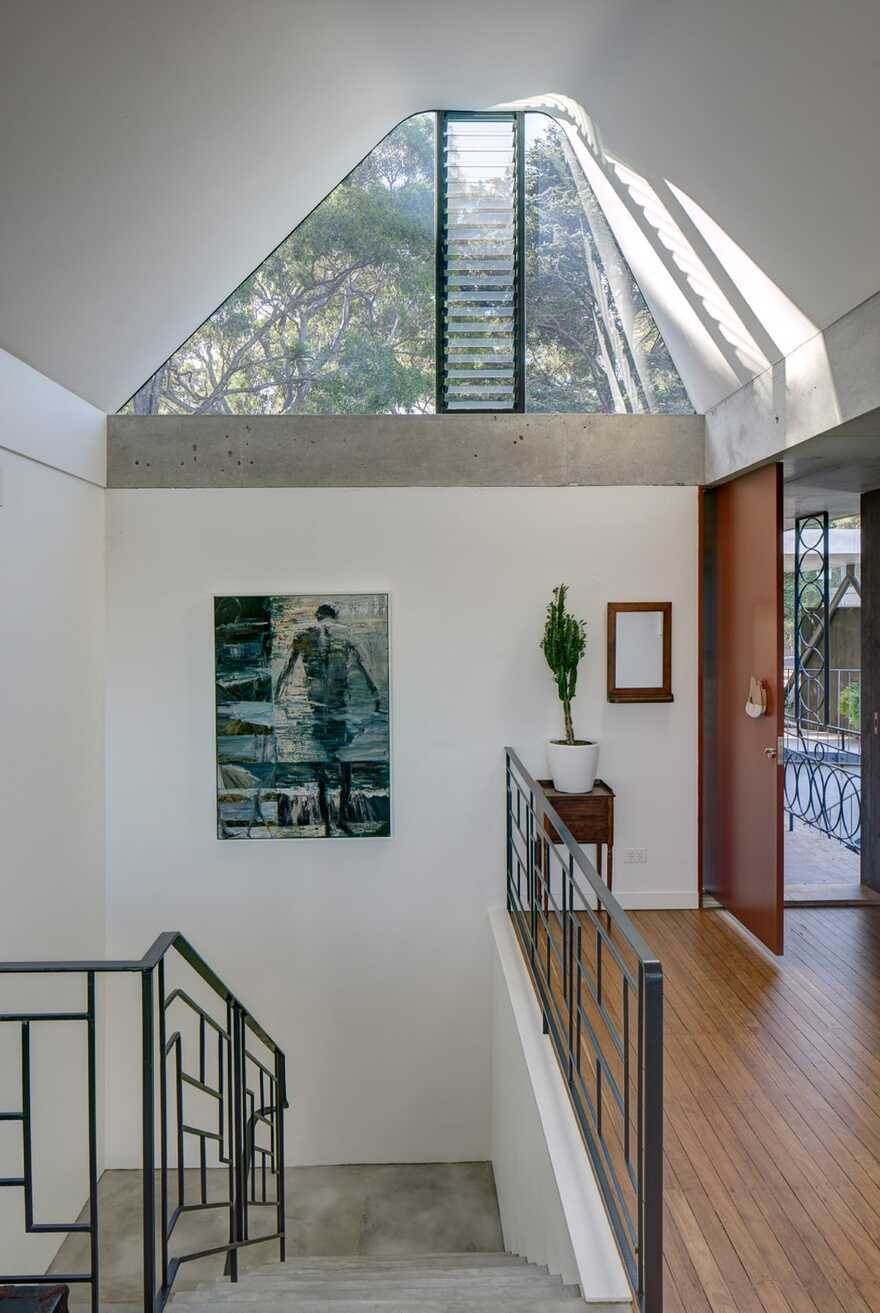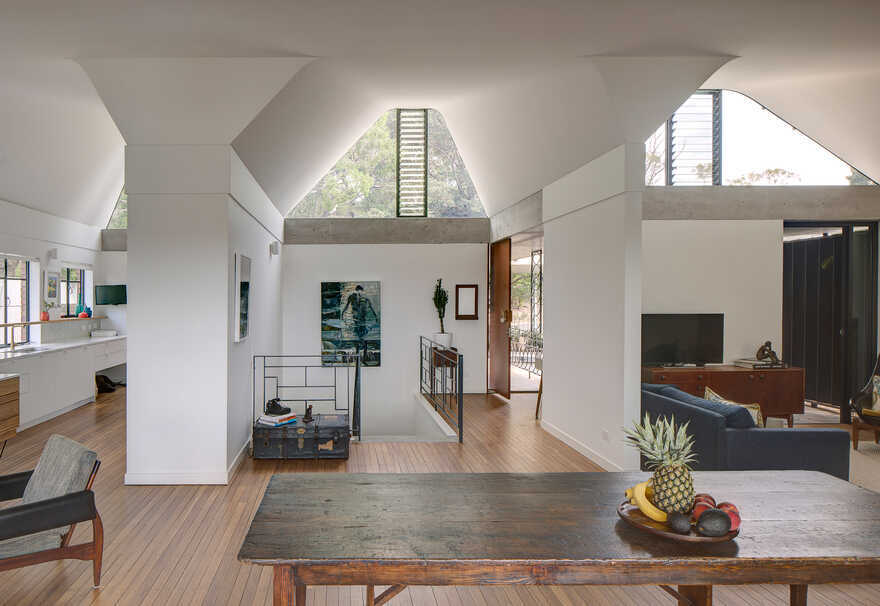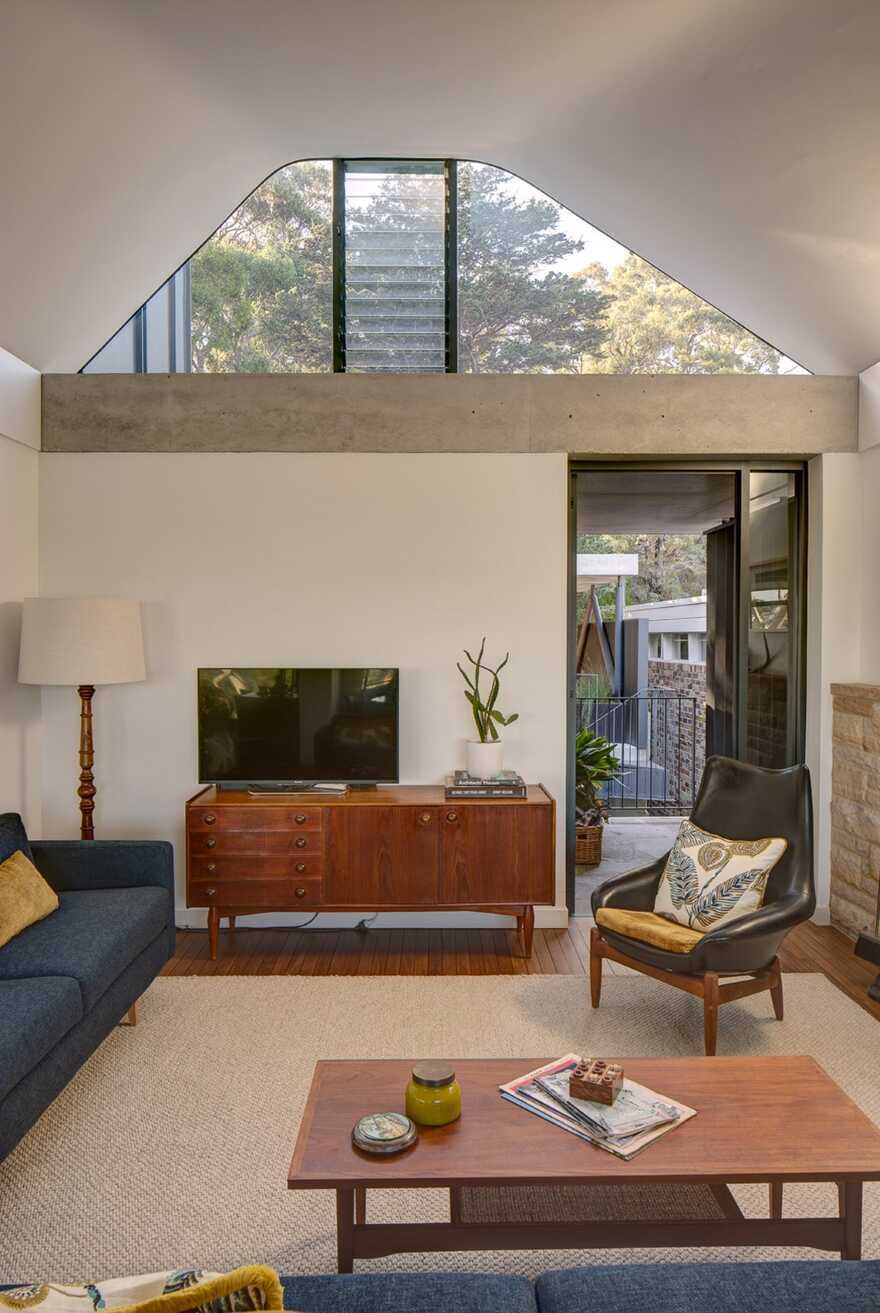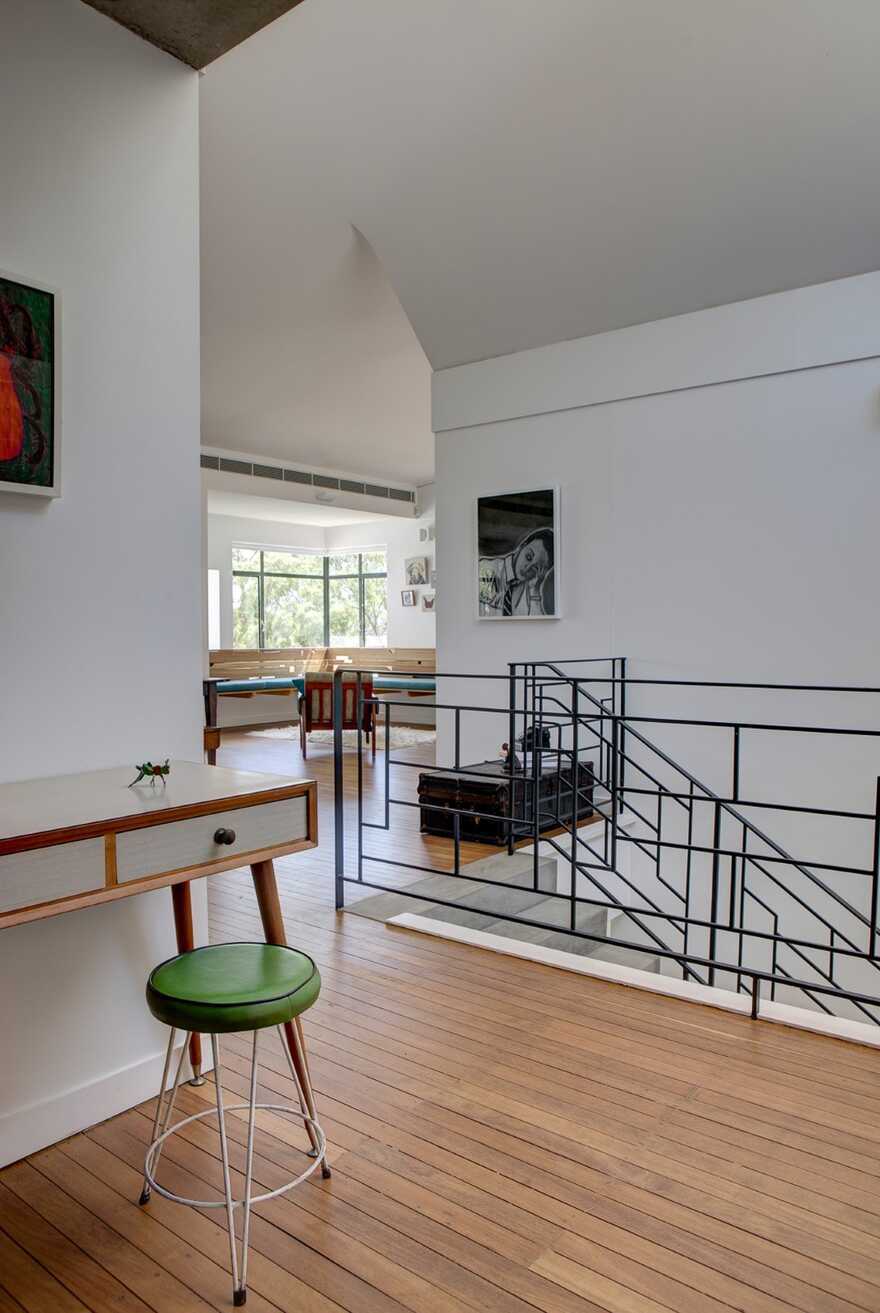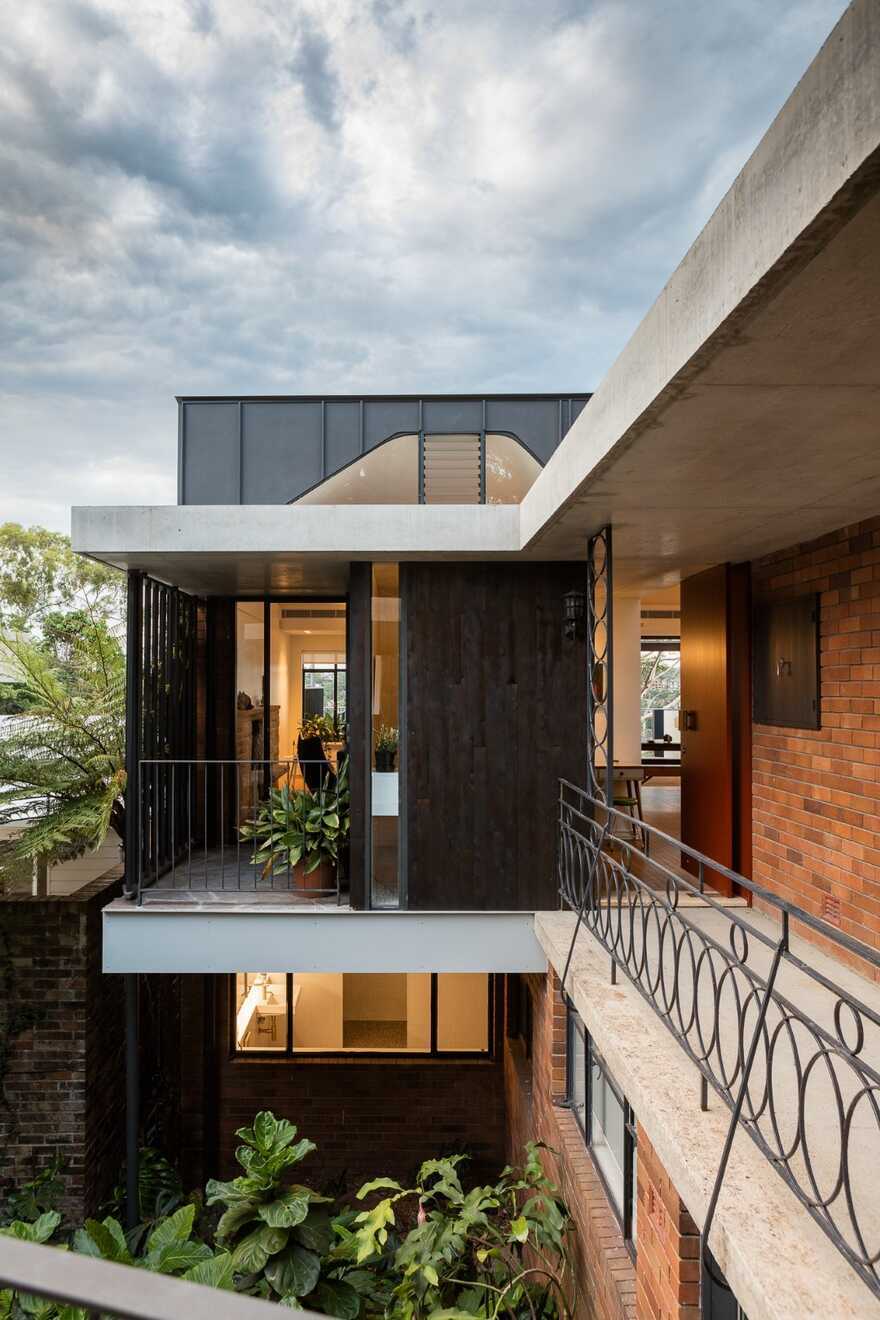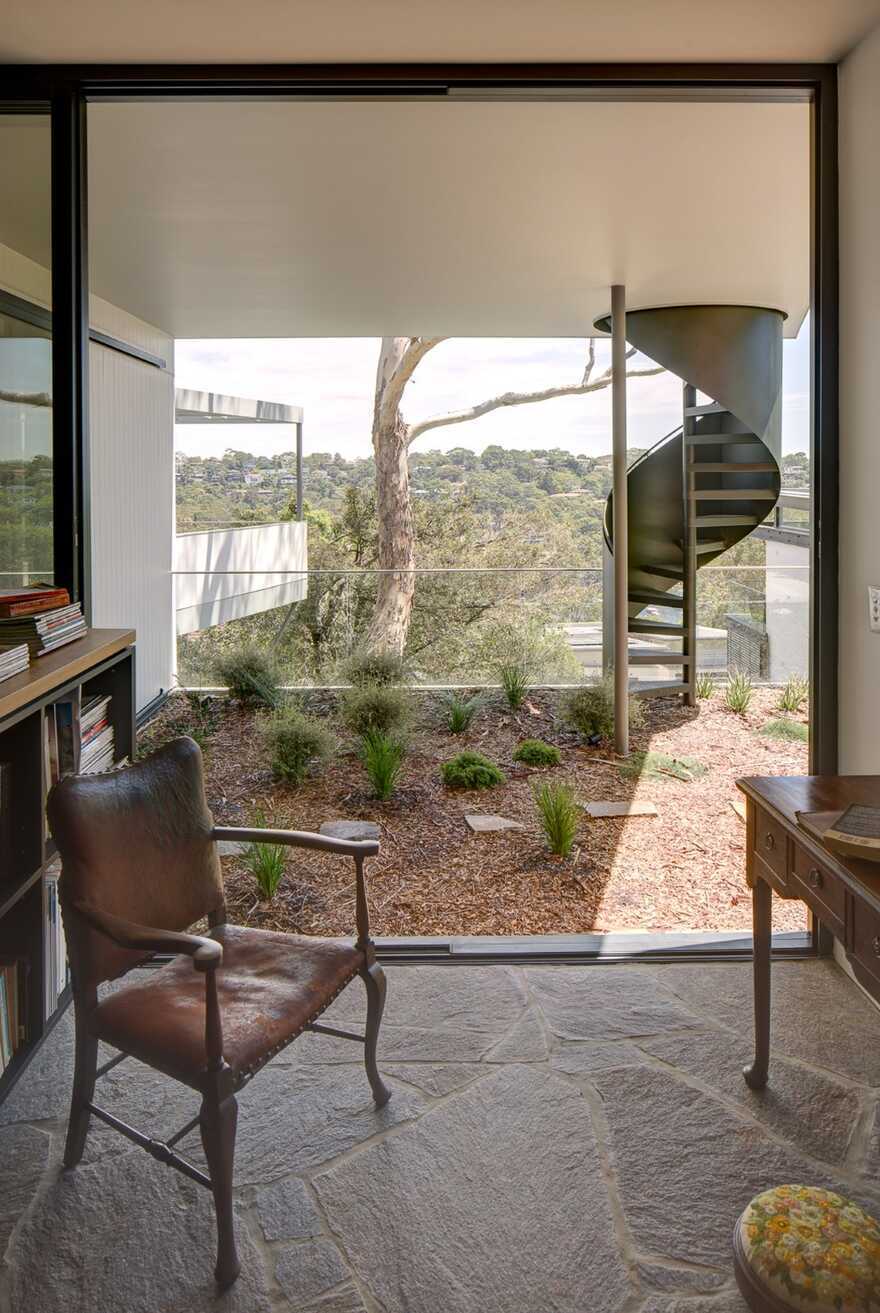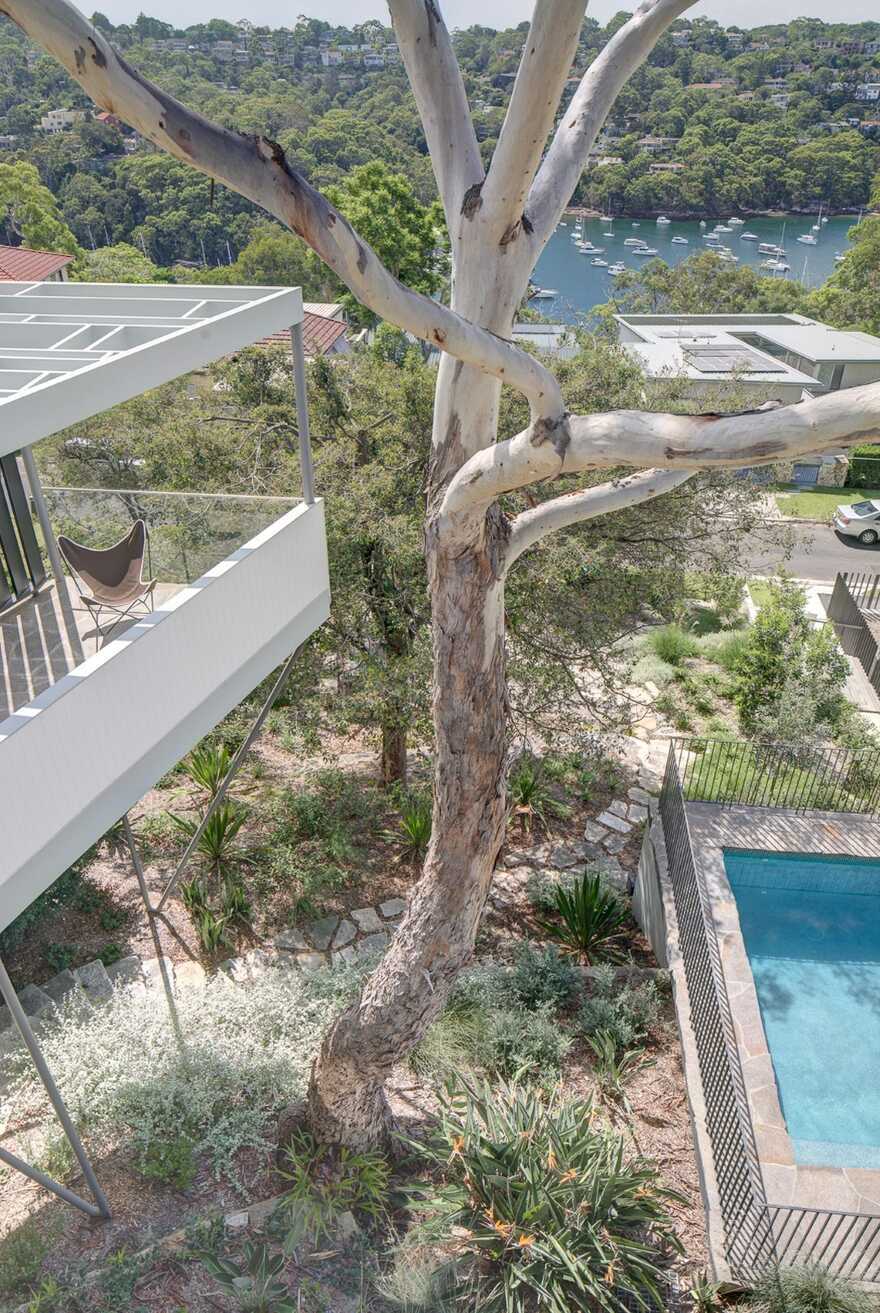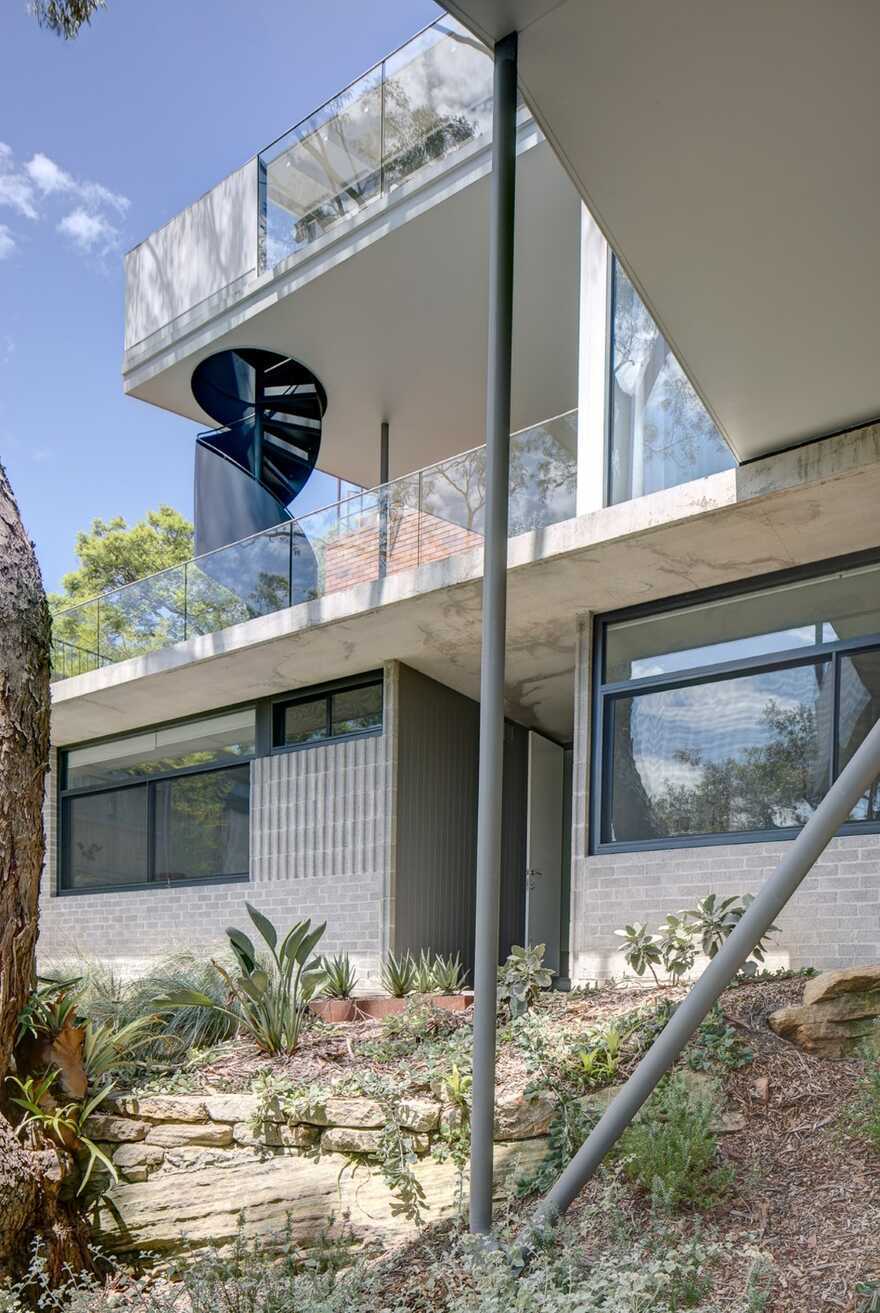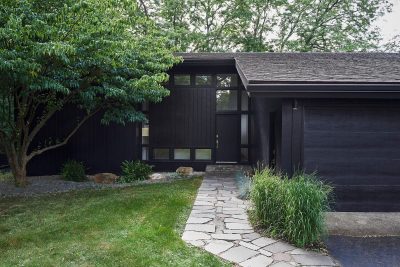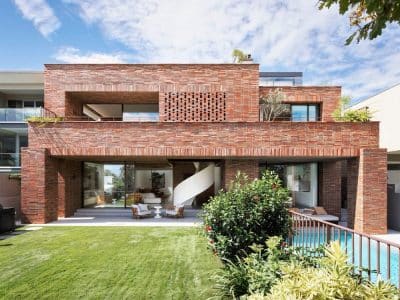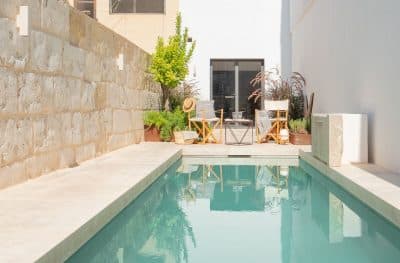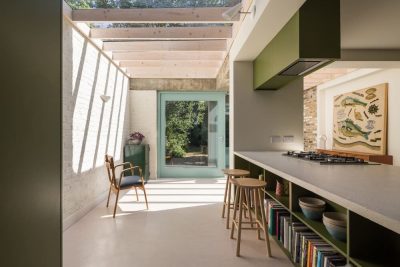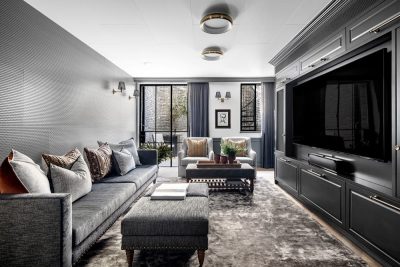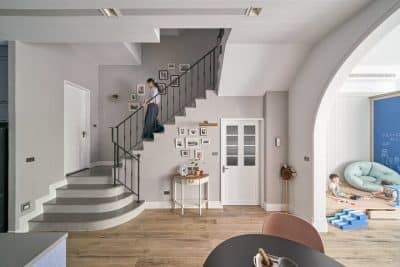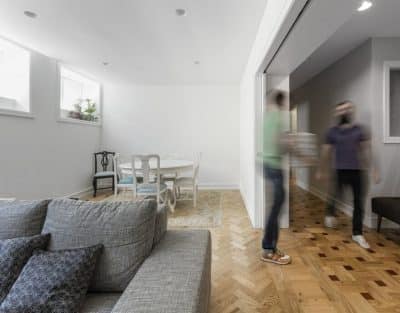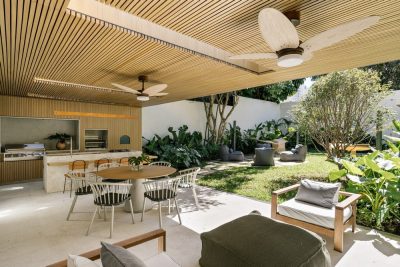Project: Five Gardens House
Architects: David Boyle Architect
Builder: Graybuilt Pty Ltd
Location: Northbridge, Australia
Area: 260 m2
Year 2018
Photo Credits: Brett Boardman Photography
Text by David Boyle Architect
Perched on a headland in Middle Harbour, between The Knoll, a remanent bush outcrop, and a spectacular eucalypt within the back yard, Five Gardens House establishes landscape as a form and spatial generator for the alterations to a 1950’s suburban modernist house.
Arched ceilings float above a projecting concrete entry roof as if the volume of the rock outcrops in the adjacent bushland has permeated into the building form. Horizontal projections, supported on branch-like steel posts, over 3 levels reach out into the landscape and wrap around the eucalypt in the rear yard.
New work is joyously stitched into the existing building fabric to create open plan living spaces and omnipresent connections to gardens on all levels. Three existing gardens have been retained and replanted, including a sunken entry garden, a walled kitchen garden and a large sloping bush garden in the back yard. A fourth rooftop garden on the middle level has been created by the addition of a third level at the base of the building. The arched windows on the upper level provide aspect up to the fifth garden, The Knoll, and by doing so allows for this landscape to be subconsciously claimed.
A large concrete awning is constructed over the existing garage and extended towards the street to form an entry forecourt and additional parking. The structure extends along an elevated bridge and returns around the sunken entry garden to form the roof for a new living room balcony, entry, and bathroom. Above this, a new skillion roofline follows the slope of the land and forms the ceiling for the open plan living, dining and kitchen spaces. These are spatially divided by the 3 arched ceilings with southern windows up to The Knoll.
Small recessed balconies are replaced with a projecting covered balcony with external spiral stair connecting down to the rooftop garden. An existing stair provides access down to the mid-level where a new library opens directly to the roof garden. A new master bedroom suite also connects to the roof garden along with an extruded elevated balcony bending around the eucalypt. The balcony is supported by a thin self-bracing bent steel post structure in a trapezoidal form to minimize disturbance to the tree roots. A screen wall, pebble roof, and pergola provide dappled light under the eucalypt.
A new lower level provides new bedrooms and bathroom for teenage boys and direct access to the back garden and pool. The external stair along the eastern boundary is extended down to the rear yard and provides external access from the kitchen garden to the roof rear gardens. The internal and external stairs create a spiral circulation system connecting all levels and gardens. Subtle shifts in geometry yield to the prevailing aspect over Sailors Bay. Raw, robust materials and expressionistic structure invite an emotive response and embed the building into the landscape setting.
Sustainability / Design approach
Sustainable design underpins the strategy for the project. The materials and planning of the existing house were analysed at the start of the design, aiming to retain as much as possible and minimise unnecessary construction work. Priority was given to useable outdoor spaces and retaining a mature Sydney peppermint gum tree and garden spaces on the site. This recognises the embodied energy used in the original construction and the energy and resources required for the construction of new work and balances the overall ecology of the site.
Existing double brick external walls provide good thermal mass. New lower level is an insulated concrete slab on ground with brick walls and concrete roof structure with roof garden for thermal mass.
Existing materials have been retained, repaired and repurposed. This included: face brick external walls, steel-framed windows, internal rendered brick walls, timber-framed flooring, timber strip flooring, original midcentury light fittings, internal stair and metal balustrades.
The roof is fitted with R1.5 foil-backed blanket with an air gap to R3 polyester insulation. External framed walls incorporate sarking behind the cladding and R2 polyester wall insulation. Internal walls and floor are fitted with R2 acoustic insulation providing both thermal and acoustic performance. The concrete slab on ground includes R1 rigid insulation.
The requirement for artificial heating and cooling has been minimised by passive design strategies of thermal mass, orientation, shading and cross ventilation.

